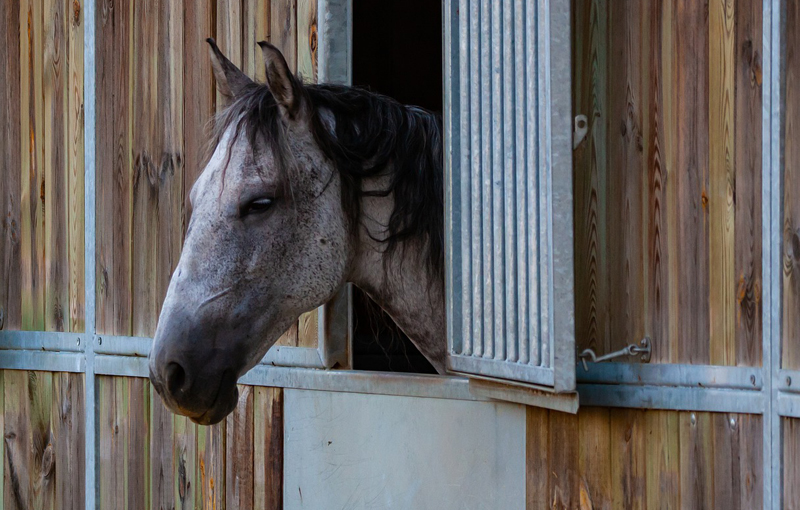Stem cell therapy at the Ontario Veterinary College (OVC) Health Sciences Centre is yielding promising results in the treatment of tendon injuries in horses.
Two horses are currently being treated using allogous stem cells – cells that were banked and transplanted from another donor horse – a medical first in Canada and among only a handful of cases reported worldwide.
“The results are encouraging,” says Dr. Judith Koenig, an equine surgeon in the Department of Clinical Studies and OVC’s Equine Sports Medicine and Reproduction Service. “Now we want to attract more cases so we can continue to evaluate stem cell therapy for the treatment of tendon lesions, ligament and joint injuries.”
Koenig is treating the horses using stem cells derived from the umbilical cord blood of foals obtained using a process developed by Dr. Thomas Koch, a veterinarian and researcher in the Department of Biomedical Sciences. Koch’s work is focused on regenerative medicine and the potential of stem cells to repair damage to joints and cartilage caused by injuries and diseases such as arthritis.
The cases illustrate the hope and promise of stem cell therapy, and the need to proceed with caution.
Koenig first assessed one of the horses, a two-year old racing Thoroughbred, about seven months ago for an injury to the superficial digital flexor tendon in its right front leg.
“The injury was career-ending in severity using conventional therapies,” Koenig says.
So a new approach was needed. In June, stem cells were injected into the horse’s injured tendon. The horse has since shown remarkable improvement at its three-month and six-month rechecks at OVC.
“We were absolutely astonished,” says Koenig. “At three months, the tendon looked as good as it would after six months of healing. It looks amazing on ultrasound.”
Diagnostic imaging is provided by Dr. Heather Chalmers, who uses ultrasound to assess the injuries and to guide the injection of stem cells to the injury site.
The other horse, a Hanoverian breeding stallion, has received two stem cell injections to treat a chronic injury to its left hind leg that prevents him from mounting. The horse had been making good progress following successful surgery at OVC to treat a proximal suspensory lesion, but then came up lame again before Christmas.
“This time, he was more lame than before,” says Koenig. “Because our other stem cell patient was doing so well, we decided to try it in this case as well.”
However, while the injury responded well to the first injection, the follow-up ultrasound also revealed a new tear in another part of the tendon.
“He’s tolerating the stem cells quite well – there have been no signs of inflammation or rejection in response to the injections,” says Koenig. “So we plan to bring him back in a month for another injection and hopefully we’ll see improvement.”
Koch was the first to establish a protocol for collecting and differentiating stem cells from equine cord blood, a process that is non-invasive and simple compared with obtaining cells from embryos or bone marrow. Subsequent research, by a number of Koch’s and Koenig’ s graduate students, has shown that compared to cells from other sources, mesenchymal stem cells derived from cord blood have equal or greater potential for healing connective tissue, muscle and bone.
“From my perspective, these clinical cases are first of all about safety because these cells are not from the patients themselves, but transplanted from another horse,” says Koch. “Second, we want to know if the cells make a difference and help the patient heal – and it seems that they do.”
The hope is that allogous stem cells will offer at least one key advantage over autologous therapy in which the patient’s own cells are used: time. It can take two to four weeks to collect cells from the patient’s bone marrow, blood or fat, and culture the millions of cells required for injecting back into the injured tissue. The process only takes four to six days with cord blood including over night courier shipping to the treating clinician. Allogous cells can be banked for future “off the shelf” use, which means horses can be treated within days of being injured. Allogous cells can also be screened and categorized into cells with optimal properties for treating various conditions.
When treating soft-tissue injuries, timing is everything, says Koenig.
Studies of tendon injuries treated with bone-marrow-derived stem cells have shown that horses are much more likely to re-injure the same tendon if they’re not treated within 44 days.
“That’s why it’s so critical to treat them quickly,” she says.
More from Horse-Canada:




